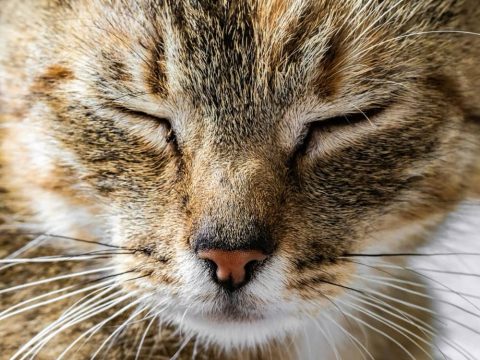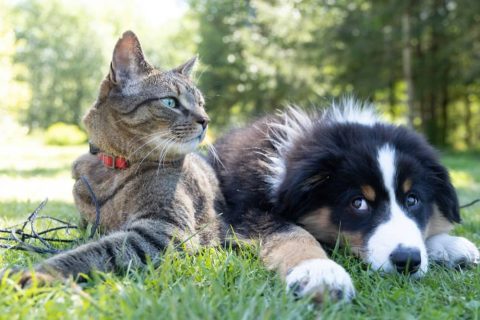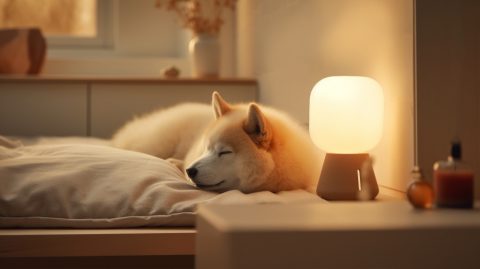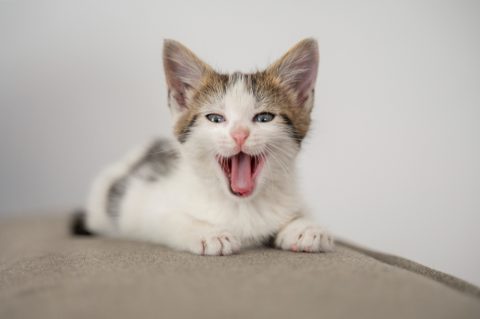Finding unexpected “presents” around your home from your usually well-behaved cat can be both frustrating and concerning. Most feline companions naturally gravitate toward using their litter box—it’s an instinctive behavior rooted in their desire for cleanliness and territory management. When this routine suddenly changes, it’s your cat’s way of communicating that something isn’t quite right.
Unlike dogs who might have occasional accidents during training, mature cats typically maintain excellent bathroom habits once established. When inappropriate elimination begins, it rarely represents defiance or spite. Instead, these incidents often signal underlying issues that require your attention and understanding to resolve effectively.
Contents
Decoding the Mystery Behind Inappropriate Elimination
Medical Conditions Affecting Bathroom Habits
Digestive Disorders and Bowel Irregularities
Gastrointestinal upset ranks among the leading medical causes of litter box avoidance. Cats experiencing loose stools may simply cannot reach their designated bathroom area in time, while those suffering from constipation might develop negative associations with their litter box.
When elimination becomes painful or unpredictable, your cat may instinctively seek alternative locations that feel safer or more comfortable. This behavior stems from survival instincts rather than behavioral defiance.
Underlying Health Complications
Various medical conditions can impact your cat’s bathroom routine beyond simple digestive issues. Arthritis or joint pain might make navigating into the litter box physically challenging, particularly for senior cats or those with mobility limitations.
Cognitive changes, neurological conditions, or certain medications can also affect your cat’s ability to remember bathroom routines or maintain normal elimination patterns. These medical factors require professional veterinary evaluation to identify and address appropriately.
Environmental and Hygiene Factors
Cleanliness Standards and Maintenance Issues
Cats possess remarkably sensitive noses and maintain naturally high cleanliness standards. A litter box that seems acceptable to human standards might feel completely unusable to your fastidious feline companion.
Consider your own reaction to encountering an unclean public restroom—cats experience similar aversion when faced with soiled or malodorous litter boxes. Regular maintenance becomes crucial for consistent litter box usage.
Litter Preferences and Sensitivities
Not all litter types appeal equally to every cat. Some felines prefer fine-grained textures that mimic natural sand, while others favor larger pellets or specific materials. Scented litters, while appealing to human preferences, can overwhelm sensitive feline noses and create avoidance behaviors.
Recent changes in litter brand, type, or scent can trigger elimination problems even in previously well-behaved cats. These preferences often develop over time and may change as cats age or experience health fluctuations.
Psychological and Social Stressors
Household Changes and Environmental Disruptions
Cats thrive on routine and predictability, making them particularly sensitive to household changes. New family members—whether human or animal—can disrupt established territorial boundaries and bathroom habits.
Major life events like moving homes, renovations, changes in work schedules, or family departures can create sufficient stress to alter elimination patterns. Understanding your cat’s perspective on these changes helps address resulting behavioral modifications.
Multi-Cat Dynamics and Territory Issues
In households with multiple cats, litter box politics can become surprisingly complex. Dominant cats might claim certain boxes as their exclusive territory, while more submissive felines may feel uncomfortable using shared facilities.
Social hierarchies, personality conflicts, or competition for resources can manifest as inappropriate elimination behaviors. These dynamics often require careful observation and strategic environmental modifications to resolve.
Physical Environment and Accessibility
Location Considerations and Privacy Needs
Litter box placement significantly impacts usage consistency. Boxes positioned in high-traffic areas might feel too exposed for cats seeking privacy during vulnerable moments, while those placed in isolated locations might feel like potential traps.
Ideal locations provide easy access while maintaining sufficient privacy and quiet. Avoid placing litter boxes near food and water stations, as cats instinctively separate eating and elimination areas.
Accessibility and Physical Barriers
Physical barriers that seem insignificant to humans can create major obstacles for cats. High-sided boxes might challenge senior cats or those with mobility issues, while covered boxes can feel claustrophobic to some felines.
Consider your cat’s physical capabilities and preferences when evaluating litter box accessibility. Simple modifications often yield dramatic improvements in usage consistency.

Developing Effective Solutions and Management Strategies
Medical Intervention and Health Assessment
Professional Veterinary Evaluation
When inappropriate elimination begins suddenly or persists despite environmental modifications, professional medical evaluation becomes essential. Your veterinarian can identify underlying health conditions that might contribute to bathroom habit changes.
Comprehensive examinations may include physical assessments, blood work, urinalysis, or imaging studies to rule out medical causes. Early intervention often prevents minor issues from developing into chronic problems.
Treatment of Underlying Conditions
Medical treatments vary significantly depending on identified causes. Digestive issues might respond to dietary modifications, probiotics, or prescription medications, while pain management becomes crucial for cats with arthritis or mobility challenges.
Working closely with your veterinary team ensures appropriate treatment selection and monitoring for your cat’s specific needs and circumstances.
Environmental Modifications and Hygiene Improvements
Establishing Optimal Cleaning Routines
Consistent litter box maintenance forms the foundation of successful elimination management. Daily waste removal and regular complete litter changes create an environment that appeals to feline cleanliness standards.
For multi-cat households, increased cleaning frequency becomes even more critical. Consider your cats’ individual preferences and adjust maintenance schedules accordingly to maintain acceptable hygiene levels.
Litter Selection and Experimentation
Finding the ideal litter type might require patient experimentation with different options. Gradually transitioning between litter types helps identify preferences without creating additional stress or confusion.
Unscented, clumping clay litters often provide good starting points, but individual preferences vary significantly. Some cats prefer natural alternatives like paper-based or wood pellet litters, particularly those with sensitivities or medical conditions.
Stress Reduction and Environmental Enrichment
Creating Calming Environments
Reducing household stress benefits overall feline wellbeing and often improves elimination consistency. Providing multiple hiding spots, vertical territory options, and consistent routines helps cats feel more secure in their environment.
Consider using synthetic feline pheromones, calming supplements, or environmental modifications to reduce anxiety levels. These approaches work particularly well when combined with other management strategies.
Multi-Cat Household Management
Successful multi-cat households require strategic resource distribution and conflict management. Providing multiple litter boxes in different locations reduces competition and territorial disputes over bathroom facilities.
The general recommendation suggests one litter box per cat plus one additional option, but some households may require even more boxes depending on individual cat personalities and relationships.
Implementation Strategies and Long-term Success
Systematic Problem-Solving Approaches
Identifying Root Causes Through Observation
Careful observation often reveals patterns that help identify underlying causes of elimination problems. Note timing, locations, and circumstances surrounding inappropriate elimination incidents to guide solution selection.
Keep detailed records of changes in routine, diet, household dynamics, or environmental factors that might correlate with bathroom habit disruptions. This information proves invaluable during veterinary consultations or behavioral assessments.
Gradual Implementation and Patience
Successful resolution often requires patience and systematic approach implementation. Cats may need time to adjust to environmental changes or overcome negative associations with their litter boxes.
Avoid making multiple simultaneous changes, as this can create additional confusion or stress. Focus on one modification at a time while monitoring results before introducing additional interventions.
Monitoring Progress and Maintaining Success
Tracking Improvements and Setbacks
Document elimination patterns throughout the resolution process to identify effective strategies and recognize potential setbacks early. Consistent monitoring helps fine-tune approaches and maintain long-term success.
Be prepared for occasional relapses, particularly during times of household stress or routine changes. Quick intervention during these periods often prevents return to chronic inappropriate elimination patterns.
Preventive Maintenance and Ongoing Care
Once successful bathroom habits resume, maintaining the environmental and care factors that supported improvement becomes crucial for preventing future issues. Continue optimal litter box hygiene, stress management, and health monitoring practices.
Regular veterinary check-ups help identify potential health issues before they impact elimination habits, while consistent environmental management prevents many behavioral causes of inappropriate elimination.
When Professional Help Becomes Necessary
Persistent elimination problems despite consistent management efforts warrant professional veterinary consultation. Your veterinarian can rule out medical causes and provide specialized treatment recommendations for your cat’s specific situation.
Don’t hesitate to seek help early in the process—many elimination problems resolve more easily with prompt intervention than after they become established patterns. Your cat’s comfort and your household harmony are worth professional investment.








